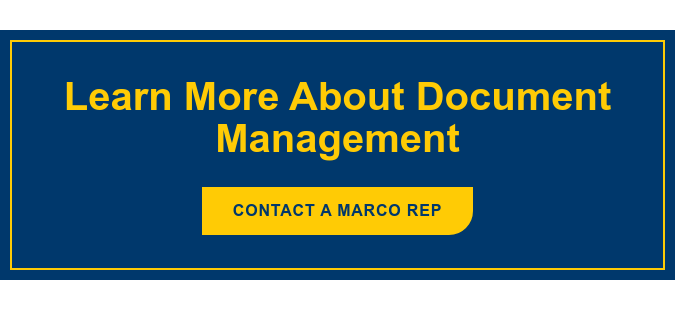There is a lesson in the words, “a poor craftsman blames his tools” when it comes to document management best practices. The best document management system can do a lot for a company's ability to get work done more efficiently, but you need to put some thought into it before and after you implement it. Here are some things to remember to get the most out of your document management tools.
1. What gets measured gets done
 It’s an old adage, but it’s true. You’ve got to set goals before embarking on document management, and it's important to establish quantifiable goals. Just plugging it in and hoping it begins to improve all your processes is a recipe for failure. At times it's beneficial to partner with a consultant or a vendor who knows the software, establish ballpark targets for the kinds of improvement numbers you can expect and then share these with your people — the people in your organization who will actually be using the platform to make document management happen.
It’s an old adage, but it’s true. You’ve got to set goals before embarking on document management, and it's important to establish quantifiable goals. Just plugging it in and hoping it begins to improve all your processes is a recipe for failure. At times it's beneficial to partner with a consultant or a vendor who knows the software, establish ballpark targets for the kinds of improvement numbers you can expect and then share these with your people — the people in your organization who will actually be using the platform to make document management happen.
2. What’s in a name?
This might take a little time, but sitting down with your staff and establishing some guidelines for the naming of files and file folders is vital to good document management. We’ve all had whole hours stolen from our lives trying to find a file or image lost in a forest of file names that are completely inscrutable. Sometimes the application just assigned random numbers to files, sometimes it was the guy who used astrology to organize his files, sometimes it was the woman who used project numbers that only she understood, but in all cases it made the files and folders utterly unusable to everyone else. It will take some up-front work establishing a naming method, but it will be worth it in the long run.
3. Priorities
Like goals, setting priorities is vital. If your organization is sales driven, then prioritizing the order process during the document management implementation is important. Another priority might be customer complaints or if R&D is the core of your organization, make sure the necessary documents are first on the list for the project. This would be a good point to do your due diligence to ensure you don’t inadvertently exclude an important department as you set up priorities.
4. Avoiding paper
Document management is software, and as such, it manages data very well. If, however, you have paper documents that will be scanned and put in the system, you may not get the full potential of the software if the document isn't indexed correctly. These images of documents are often not searchable or accessible to basic applications like Excel or Word. Static PDFs can also present problems. You might have to start thinking differently about documents as you get smarter about document management. The process you use to generate paper documents might need to be modified if you want to get all the efficiency you can out of document management.
5. Don’t forget the people
Your employees may not have been involved in buying the document management software platform, but they are the ones needed to get the full benefit of the system. The savings and efficiencies you need to meet your goals are completely up to them, so get them involved as early as possible.
Make the user interface as simple as you possibly can. And don’t forget to train your people, build job aids for them and share your goals.
